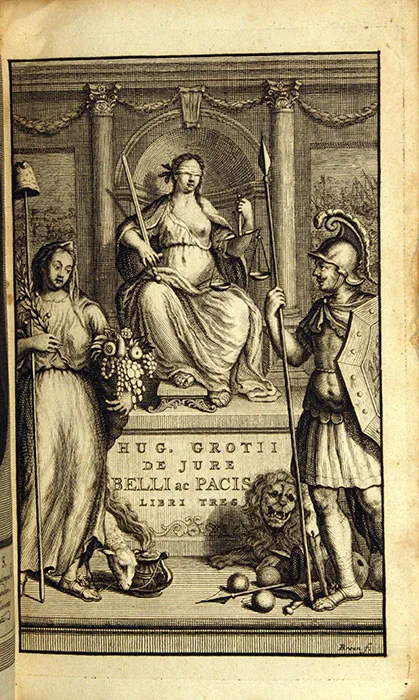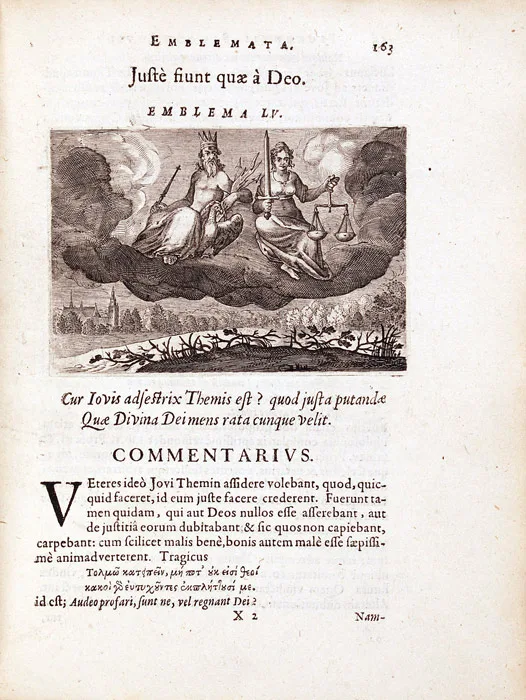Case 13
- Lady Justice

Hugo Grotius. De jure belli ac pacis libri tres, in quibus jus naturæ & gentium, item juris publici præcipua explicantur … Amsterdam: Ex officina Westenina, 1712. RPRE 1712 Hol
The figure of Lady Justice is one of the world’s most recognisable icons. Most commonly seen today in courts of law, her roots lay in ancient Egypt, where the goddess Ma’at carried scales to weigh the truth of an argument. In Greek mythology, this task fell to the goddess Dike, and her mother, the Titan Themis, whom the Romans named Justitia.
The attributes of Themis – the sword and scales (among other implements) – were transferred to Justice. The sword represents the notion that justice can be swift, while the scales symbolise the weighing of factors in a case to determine truth and fairness.

Hugo Grotius. De jure belli ac pacis libri tres, in quibus jus naturæ & gentium, item juris publici præcipua explicantur … Amsterdam: Ex officina Westenina, 1712. RPRE 1712 Hol
Open image in new window

Florentius Schoonhovius. Emblemata … Partim moralia, partim etiam Civilia … Leiden: Ex officina Elzeviriana, 1626. RPRE 1626 Hol
In this depiction Lady Justice is seated between two Classical personas: the goddess of peace, Irene, identifiable by the cornucopia and staff of Hermes she carries, and Mars, the god of war. Beside Irene stands a lamb, a sign of peace, and censer, representative of the utterance of prayers.
At the foot of Mars lay a lion, a symbol for courage, strength and fortitude. The text, Grotius’s De jure belli ac pacis … (‘On the Law of War and Peace’), is a treatise on the legality of warfare, and so this engraving smartly encapsulates his subject matter.
Unlike the earlier image in Schoonhovius’ Emblemata, Justice is shown here wearing a blindfold. While it is understood today to be a sign of objectivity, for mediaeval and Renaissance readers the blindfold stood as a representation of deception.

Florentius Schoonhovius. Emblemata … Partim moralia, partim etiam Civilia … Leiden: Ex officina Elzeviriana, 1626. RPRE 1626 Hol
Open image in new window

